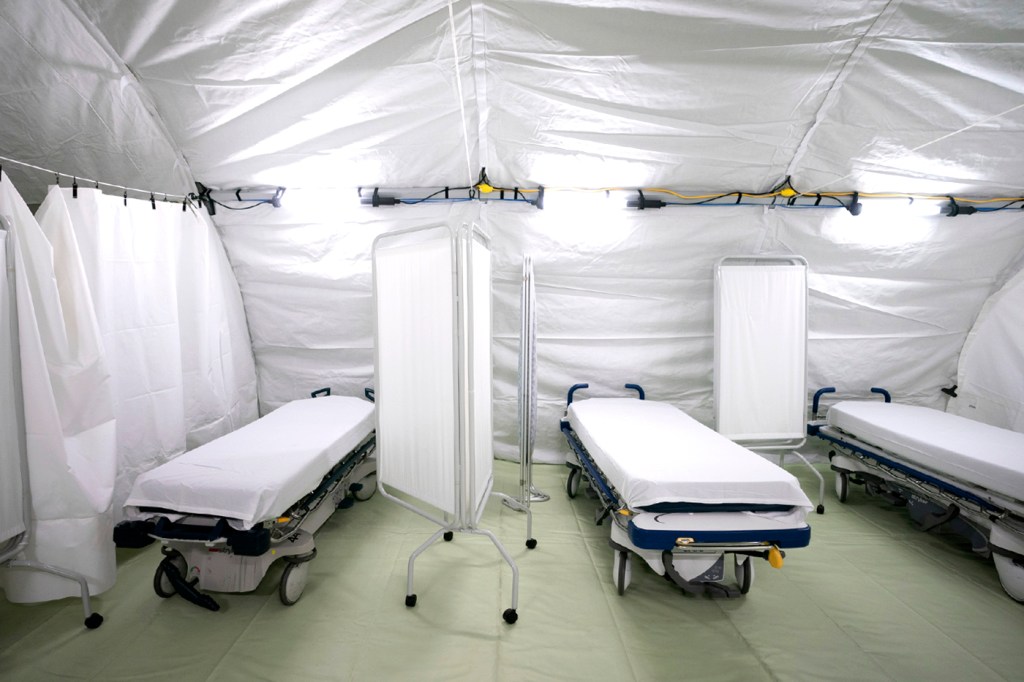Hospitals are bracing for a surge of COVID-19 cases. This model can help them get ready for staff and equipment shortages.

As the number of COVID-19 cases approaches a peak in the United States and other countries, hospitals around the world are bracing for significant surges in patients.

James C. Benneyan is a professor of mechanical and industrial engineering in the College of Engineering, and executive director of the Healthcare Systems Engineering Institute at Northeastern. Northeastern University file photo
But as hospitals get ready, they are operating on scarce data. While large-scale epidemiological models are proving to be a crucial tool for governments to control the spread of the novel coronavirus, those tools do not provide precise projections for local hospitals—each with different needs and capacities—to get ready.
“All of those models give us the big picture—that a state is going to be under siege a month from now—but they don’t really help an individual hospital address day-to-day questions,” says James C. Benneyan, who directs Northeastern’s Healthcare Systems Engineering Institute. “How many patients am I going to have in the ICU? How many are going to be ventilated? How long will they be in my hospital? When should I convert routine space to ICU or isolated beds?
Benneyan, who is also a professor of mechanical and industrial engineering, developed a modeling tool, in a partnership with the Lahey Hospital and Medical Center, to answer those questions. The model can help hospitals produce their own projections and consider possible shortage scenarios up to 30 days in advance, as they prepare for potential waves of patients that could strain their facilities.
Hospitals can run the tool with data specific to their facilities to project when the demand for hospital equipment is going to exceed the supply. It can also model the availability of hospital staff, Benneyan says, with the idea of helping health systems that have no idea about what’s coming their way.
“It can tell you when you aren’t going to have enough beds, ventilators, or equipment,” he says. “It will allow hospitals to work with their networks, and figure out—for example, in terms of personal protective equipment consumption—whether they have more or less of what they need, and start early to make plans.”
To generate those projections, hospitals can update the tool with data from a census-like count of medical equipment, beds, and patients, as well as data and estimates on how long patients are staying in the hospital and whether they require ventilators and other equipment for intensive care.
Those tools, which can project short timeframes, are crucial for healthcare workers around the world trying to keep up with the COVID-19 pandemic, Benneyan says.
Even one day could be decisive. If they know in advance that they won’t have enough resources, hospitals can start making decisions about their equipment and admission criteria. That includes freeing up or converting spaces for patients in critical conditions—COVID-19 or not.
“If three days from now it looks like you won’t have enough ICU beds,” Benneyan says, “you need about a day (maybe two for systems that don’t do this routinely) to open up new space and convert a floor or a unit that’s for other types of patients into a makeshift ICU—and also open up ancillary space where you can put those other regular patients.”
That ability to make projections of scenarios that could take place in the near future will gain even more importance as COVID-19 cases pass their peak numbers and start decreasing in different locations, Benneyan says.
It can help hospitals spot potential new outbreaks as the spread of the disease slows and governments begin to relax their measures to restart activities in different sectors of their countries. A standard strategy is to relax governmental interventions, and monitor local outbreaks.
“But how are we actually going to detect when this starts to flare up and plan accordingly?” Benneyan says.
Benneyan’s tool runs on simple inputs that hospital managers can update every day to assess the near future. Like a weather forecast, it’s fairly accurate in the short term, and, while not flawless in the long term, still a powerful planning tool.
“To the user, it’s just a spreadsheet with a bunch of hidden tabs that do a bunch of math,” Benneyan says. “A hospital obtains a rolling forecast one to four weeks out, much like a weather forecast or hurricane models, that is updated each day as time moves forward, allowing them to make specific plans for the next week or so and start more general planning for the next month.”
To create the surge capacity tool, Benneyan teamed up with Dr. Michael Rosenblatt, chief medical officer at the Lahey Hospital and Medical Center, and other hospitals associated with the Center for Healthcare Engineering Research at Northeastern, repurposing other models they have developed over the past decade to accurately predict epidemic trends, outbreaks, and the flow of patients within a health system.
And, as hospitals run the model, Benneyan and his team are updating the tool every day.
“With healthcare staff also at risk, in addition to time-varying bed and ICU occupancy, how to plan for the next several days and weeks is similarly critical” he says. “This is a huge opportunity to help health systems know what’s coming.”
For media inquiries, please contact Shannon Nargi at s.nargi@northeastern.edu or 617-373-5718.





